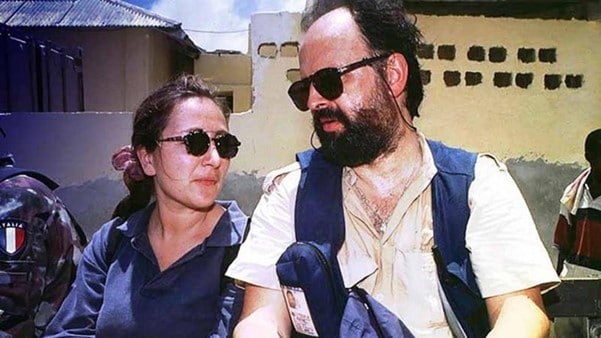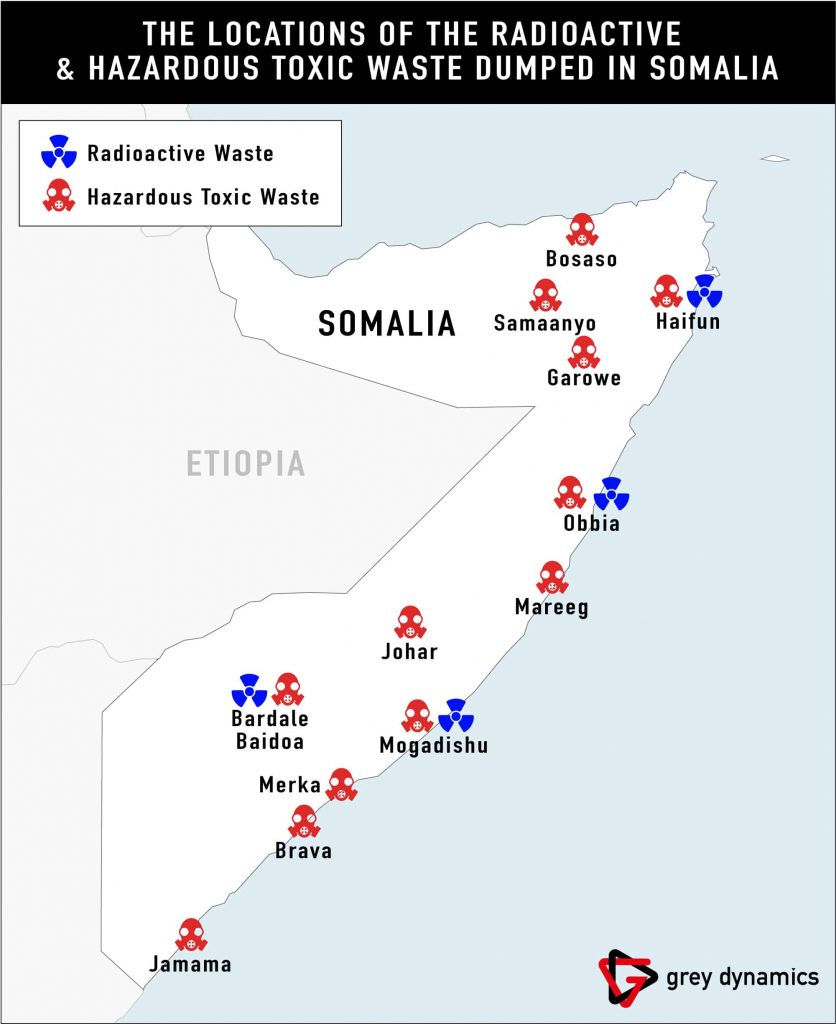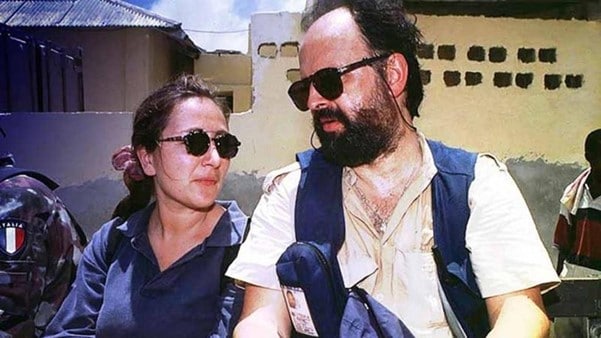The assassination of Alpi and Hrovatin took place on the 20th of March 1994. Alpi and Hrovatin died in their car in Mogadishu while coming back from an interview with one of Alpi’s sources. While they were in the car, a seven-men commando shot with a Kalashnikov to both of them. Both died on the spot.
Ilaria Alpi was an Italian journalist working for Radiotelevisione Italiana (RAI), the Italian national broadcaster, and Miran Hrovatin was her cameraman. They were in Somalia, to cover Operation Restore Hope and the withdrawal of the Italian army, due to the failed attempt of bringing peace in the country.
This operation was a UN operation led by the US. The operation focused on stabilizing the political situation and supporting and protecting the relief agencies conducting humanitarian operations.
Dictatorship Ends
After the end of the dictatorship of Siad Barre, the rebels fighting him were not able to form a government. A civil war started in Somalia. The war divided in half Mogadishu: the Northside was under the control of Ali Mahdi Muhammad, and the Southside by Mohamed Farrah Aidid, an enemy of the United States and the UN coalition.
The UN arms embargo afflicted Somalia by limiting the import and export of weapons and military equipment. In 1992, the UN published a report which explained that the African country was not respecting the embargo. The report explained how the Somali factions were acquiring arms on the international market.
While covering UN operations in Somalia, Alpi was investigating an illegal weapons supply to the Somali warlords Alpi also investigated the dumping of toxic and nuclear waste between the Italian government and Somalia. There are still many questions that need an answer.

Assasination: the Illegal Trade of Weapons Behind
The week before the assassination of Alpi and Hrovatin, on the 14th of March 1994, they went to Bosaso, a port city in the North of Somalia, to interview Abdullahi Moussa Bogor, Bosaso’s sultan, and to investigate a fishing company called Shifco. IADC donated this company to Somalia, to boost the fishing trade in the area. The owner of Shifco was Omar Mugne. Omar was a Somali businessman who was preparing to transport weapons that he bought in Ukraine for Aidid.
Alpi, during the interview with Bogor, asked him about the cooperation between the Italian government and the Somali warlords and, with the camera off, he said “things came from Rome, Brescia, and Torino” and “those people have much power and contacts”. Brescia is a city in the North of Italy and is the Italian arms manufacturing center. Alpi suspected that a Shifco ship was then used for the same illegal trade of weapons she was looking into.
The same day Alpi and Hrovatin arrived in Bosaso, the La Spezia SIOS, which was an Italian military and security services, sent a message saying: “Due to the presence of anomalies in Bosaso, Jupiter has to immediately come back to the base I Moq. Condor has to join Bravo for a possible intervention”. This type of message and the structure was the one of Gladio. Its name was Stay Behind, an Italian paramilitary organization operating in the shadow. Jupiter was the name of a member of Gladio, which at that time was monitoring the situation in Bosaso. It is still unclear who or what the anomalies are, but they were likely talking about Alpi and Hrovatin.
2020
In 2020, the CIA declassified 12 “Secret” and “Top Secret” documents regarding Mogadishu and that famous March 1994. On the 3rd of October 1993, the Rangers had a lead on Aidid and were ready to capture him, but during the operation, some missiles hit one of the four Black Hawk helicopters, and 19 American soldiers died.
The CIA main goal was to find Aidid and investigate who was supplying him with weapons and money. The CIA found out that Aidid supporters were using a company called Sitt, as a transportation hub. AICS used this same company months before to provide any type of material for the Italian army. The owners of the company were Ahmed Duale and Giancarlo Marocchino. Marocchino was an Italian businessman operating in Somalia. The CIA suspected that the Italian army was selling him weapons confiscated from the warlords. Eventually he would be selling them back to the same warlords to gain profit.
The Dumping of Toxic and Nuclear Waste
In 2009, Legambiente, an Italian environmental group, claimed that in 1991 and 1992, the N’drangheta, the Calabrian organised crime, sailed some ships carrying nuclear and toxic waste to Somalia in exchange for automatic weapons for Somali warlords. Someone then disposed in the middle of the ocean, sinked the shiip or buried it on Somali land. One of the companies involved in this illegal trade was Shifco, which carried not only weapons but also toxic waste.
A former boss of the N’drangheta, during an interview, stated that he was the man responsible for the trade of toxic waste, and he mentioned more than once Marocchino. Marocchino was the man behind a highway project in Somalia, and this same highway was the one where the waste was buried. Trucks full of waste arrived in Livorno, and then they were shipped to a port in Mogadishu. When the waste was unloaded from the ship, it was distributed and buried along many highways on the Somali territories. According to a UN report of 2003, Shifco ships were trading illegal weapons first to Mahdi, and then to Aidid.
While in Bosaso, Alpi and Hrovatin found out that the ship taken by the pirates, carried weapons for the warlords and that on the ship there were also Italian men. One of Alpi’s source was Vincenzo Li Causi, an Italian secret agent, who was aware of the illegal trade of weapons and nuclear waste. He was supposed to go back to Rome to confer with some judges regarding these illicit trades, but the day before his departure, he was killed in an attack by Somali rebels.
Map showing the locations of the radioactive and hazardous toxic waste dumped in Somalia

Source: https://italiacoloniale.com/2017/07/15/vincenzo-li-causi-il-traffico-di-scorie-armi-e-impenetrabili-segreti-in-somalia/
The Italian investigation
On the day of the assassination of Alpi and Hrovatin, Marocchino was one of the first men to reach the scene, where he stated that “they have been at the wrong place at the wrong time”. The footage of the murder scene showed how someone loaded into the bodies in one of Marocchino’s trucks. With the bodies, there were also her radio and notebooks and Hrovatin’s camera.
When the bodies arrived in Italy, either someone had stolen the camera and Alpi’s notebooks they lost them.
After the accident, the Italian army did not offer medical assistance to the victims. No one called the forensic team or ever analysed the crime.
Marocchino was also involved in bringing back to Italy the car where Alpi and Hrovatin were when they died. In 2008, after paying Marocchino 18.200 euros for the car recovery, the authorities finally examined the car. The traces of blood found on the seats were not compatible with Alpi’s or Hrovatin’s blood.
In 1997, after years of research, the authorities arrested and sentenced Omar Hassan Hashi to 26 years of prison. Hashi was in Italy to testify for the alleged violence of Italian soldiers against the Somali population. Ahmed Ali Rage (known as Gelle) accused him known as to be one of the men that shot and killed Alpi and Hrovatin. But Hashi was innocent, and the Italian government never did something to prove it. In 2015, some Italian journalists found Gelle. H testified that someone paid to lie in 2003. The authorities then freed Hashi after being wrongfully imprisoned for 16 years.
Conclusions
There are still many questions that need an answer. The authorities never caught the suspects of the assassination of Alpi and Hrovatin. Alpi was not the only journalist that died in Somalia. Five more journalists died while they were covering the story of Operation Restore Hope. Journalistic investigations found deception, omissions, inconsistencies and misdirection. 27 years later still no ones knows the truth about the assassination of Alpi and Hrovatin.

